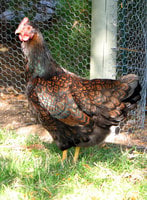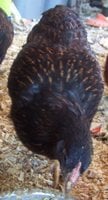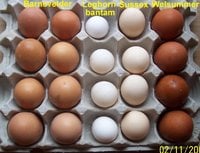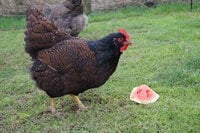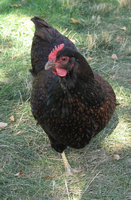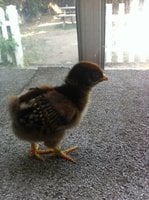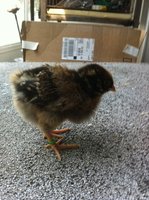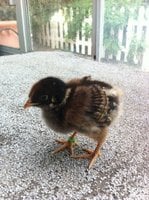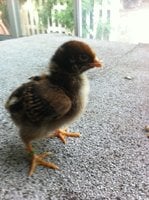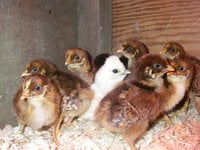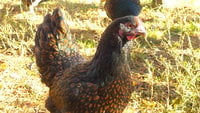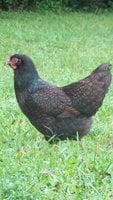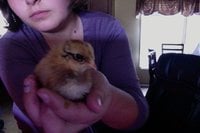General Information
- Breed Purpose
- Dual Purpose
- Comb
- Single
- Broodiness
- Average
- Climate Tolerance
- All Climates
- Egg Productivity
- Medium
- Egg Size
- Medium
- Egg Color
- Brown
- Breed Temperament
- Friendly, Calm, Bears confinement well
- Breed Colors/Varieties
- Only the dark brown, double laced bird is available in the US.
- Breed Size
- Large Fowl
According to Hans Schippers, the Dutch authority on the Barnevelder breed, development of this breed started around 1850 and 1875 when Cochin, Malay, Brahma and Croad Lanshan chickens arrived from Asia and were crossed with local fowl. One particular strain of brown egg laying fowl were similar to Black Cochins in appearance and were kept as a meat birds. Around 1885 these birds were crossed with Brahmas and the resulting offspring of this cross was crossed with Langshan. In 1898 "American utility birds", a rough version of the Golden Wyandotte were crossed into the developing breed, followed in 1906 by the addition of Buff Orpingtons. The Croad Langshan continued to have the biggest influence and contributed hardiness, brown eggs and good winter egg production.
A similar account, without the influence of the "American utility birds", was given in 1930 by P. L. Wijk, District State Poultry Expert, Apeldoom and P. Ubbels, State Poultry Consultant, Beekbergen, The Netherlands, in his contribution on The Origin of the Barnevelder and Welsummer Breeds. The authors say that:
"In 1899 it was ascertained that the fowls on the farms in the neighbourhood of Barneveld showed some uniformity. This could be explained by the fact that poultry keepers always obtained their setting eggs from the farmers who came to market with the finest eggs, and who as a rule used dark-coloured cocks for breeding."
According to Wijk & Ubbels, efforts were made to obtain more uniformity in colour and type from 1910 onwards and the name Barnevelder dates from that time. An Association of Barneveld Breeders was established in 1921 which fixed the standard.
Indian Game (Cornish) may also have been crossed into the Barnevelders in Britain, sometime after their importation in the 1920s.
The breed gained worldwide recognition and was exported to many countries because of its ability to lay approximately 180-200 large brown eggs per year.
The double-laced (red/gold) form was accepted to the APA standard in 1991.
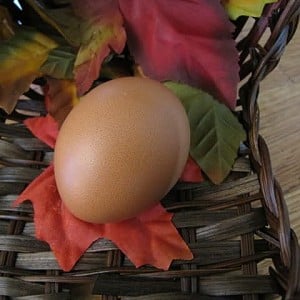
Barnevelder egg
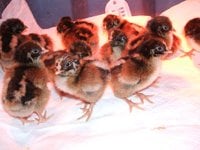
Barnevelder chicks
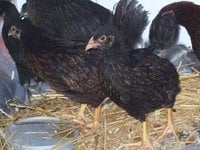
Barnevelder juveniles
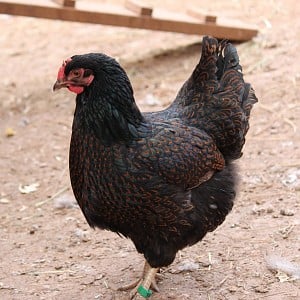
Barnevelder hen
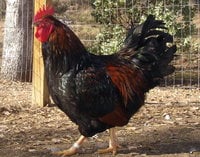
Barnevelder rooster
For more information on this breed and their owners' and breeders' experiences with them, see our breed discussion here: https://www.backyardchickens.com/threads/chicken-breed-focus-barnevelder.1092477/

